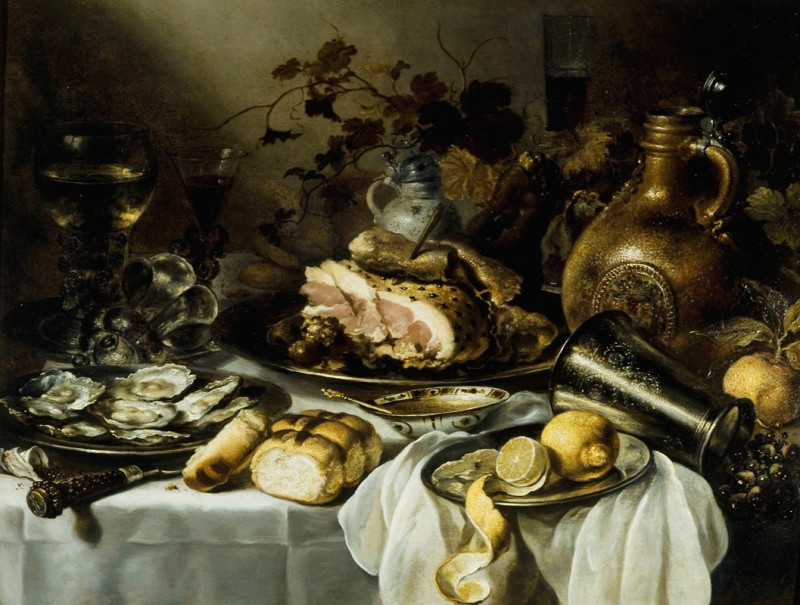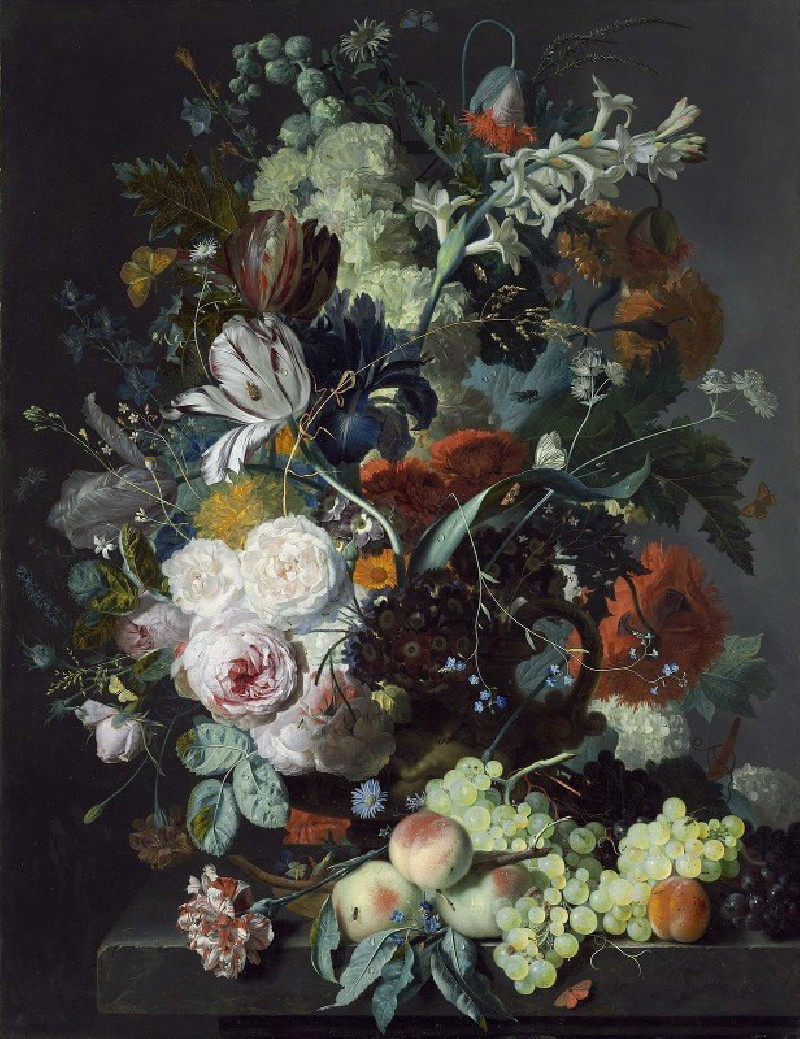Still Life with Ham (1625)
Technique: Giclée quality print
Recommended by our customers
More about this artwork
Welcome to an exploration of the sumptuous and vivid world of Dutch still life painting, brought alive in Pieter Claesz's artwork "Still Life with Ham," crafted in 1625. In this exemplary piece, Claesz masterfully captures the opulence of a simple meal, transforming it into a striking tableau of texture and light.At the center of this painting is a robust serving of ham, cooked to perfection, its juicy texture highlighted by the strategic placement of lighting. The ham, specked with cloves, symbolizes not only the sensory pleasures of taste but also the prosperity and abundance of the 17th century Dutch tables. Accompanying the ham is a loaf of bread, its crust golden and inviting, resting upon a gleaming pewter plate that reflects the surrounding items with subtle grace.The scene is further enriched by a pewter jug and a tall beer glass, both suggesting the typical beverages that would accompany such a meal. Notably, the glass displays a rich, amber-hued liquid, most likely beer, adding a note of everyday luxury.On the periphery, you'll spot smoked fish, their glossy, scaly surfaces catching the light, and a bowl of olives or perhaps stewed fruits, introducing a contrast in textures and a hint of tart flavors. This not only rounds out the meal but also invites the viewer to consider the varied palette of 17th-century cuisine.Pieter Claesz’s meticulous attention to detail, from the reflective qualities of glass and metals to the translucency of the fats in the ham, showcases his mastery over the still life genre.
Delivery
Returns
Pieter Claesz was a Dutch Golden Age painter of still lifes.
He was born in Berchem, Belgium, near Antwerp, where he became a member of the Guild of St. Luke in 1620. He moved to Haarlem in 1620, where his son, the landscape painter Nicolaes Pieterszoon Berchem was born (October 1). He and Willem Claeszoon Heda, who also worked in Haarlem, were the most important exponents of the "ontbijt" or dinner piece.






























